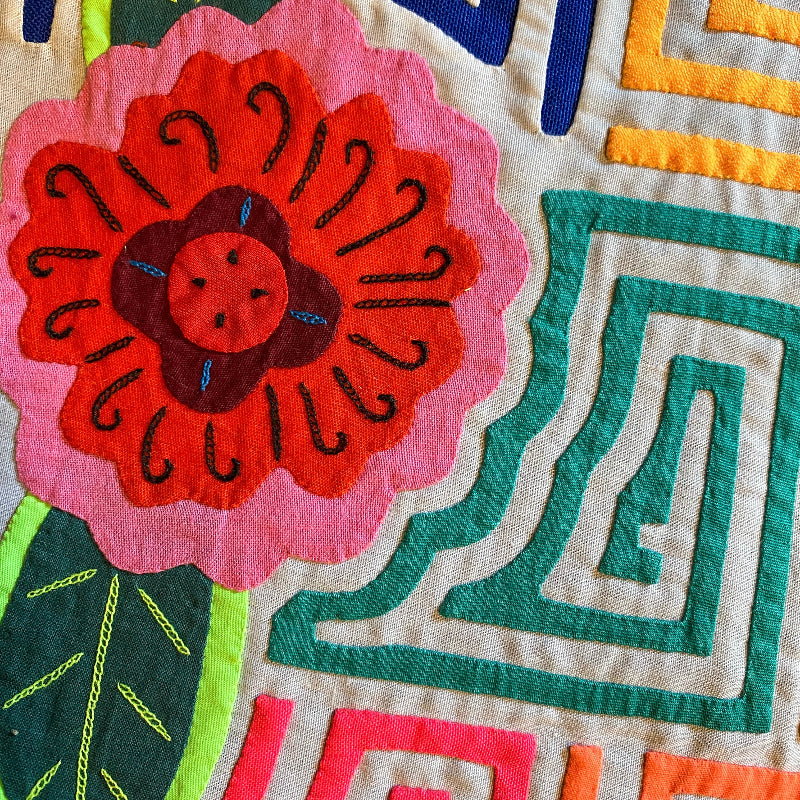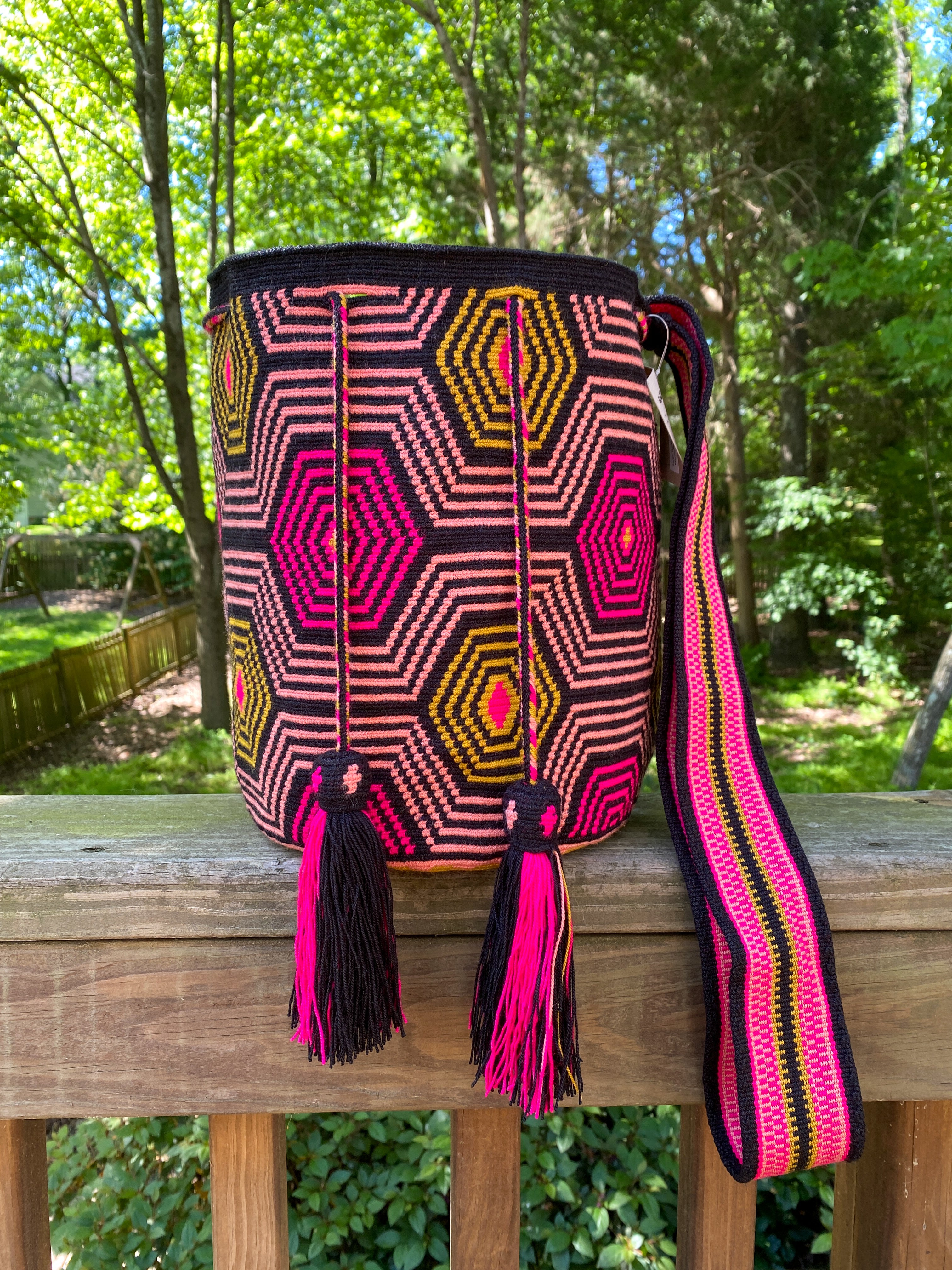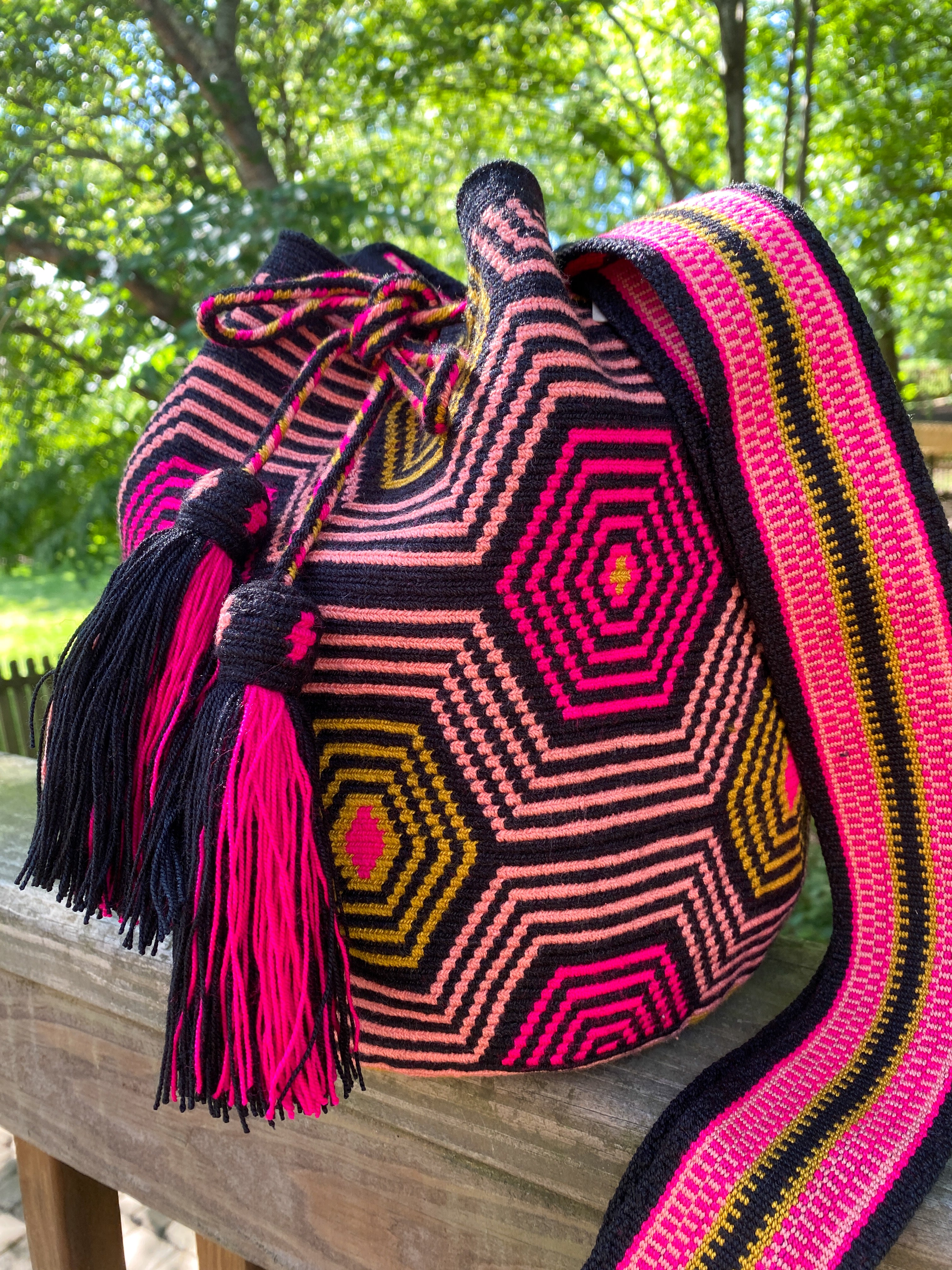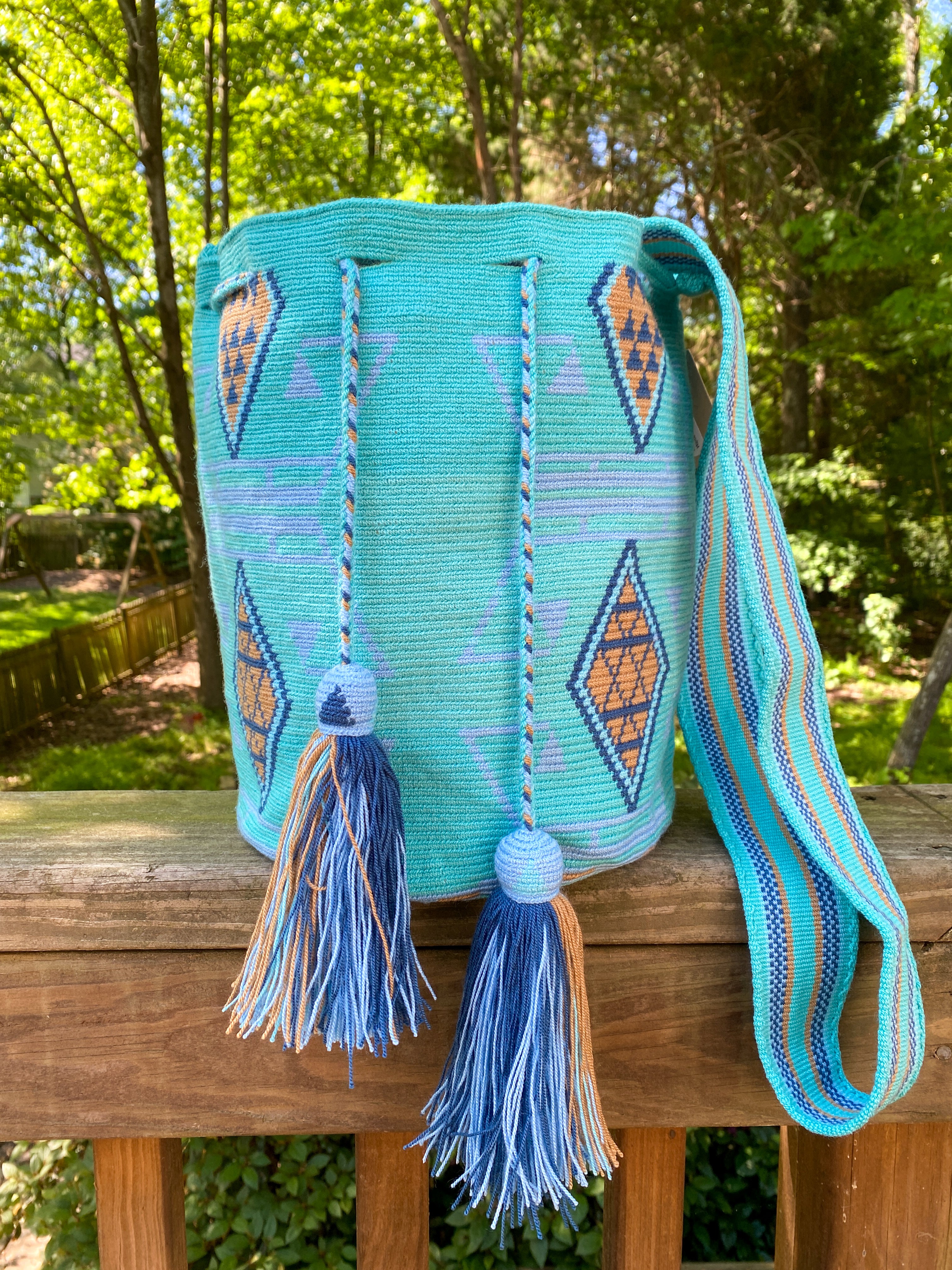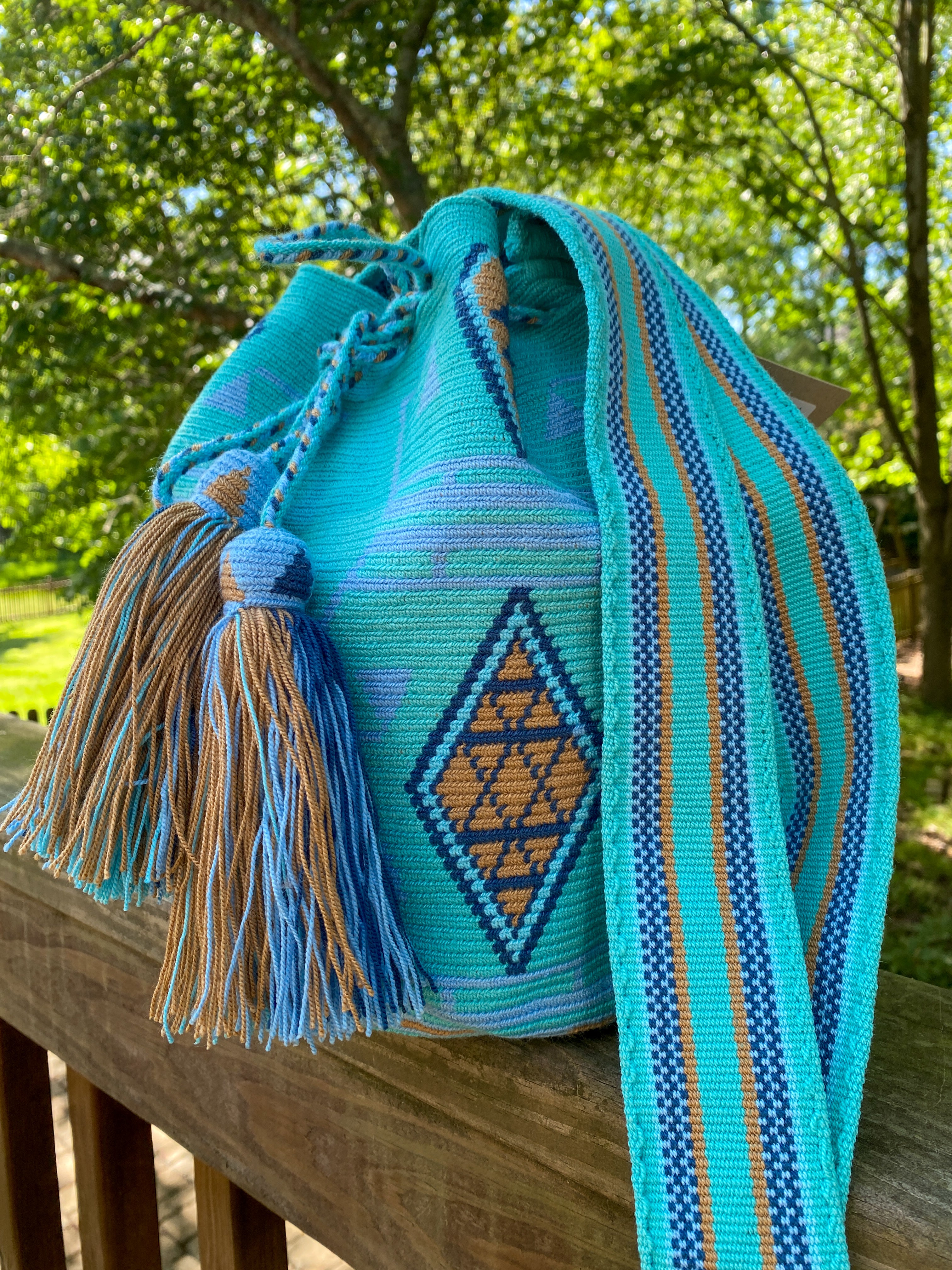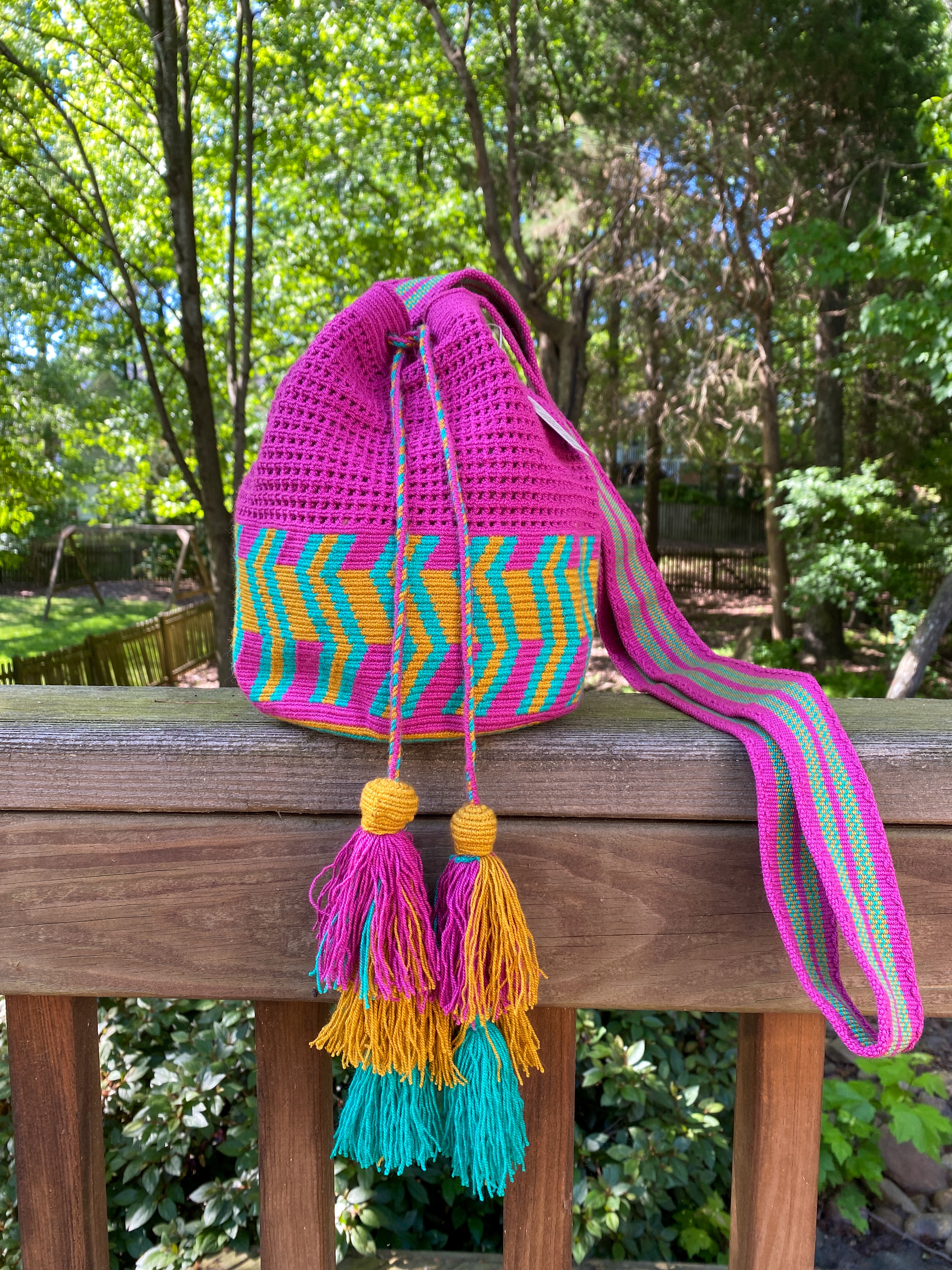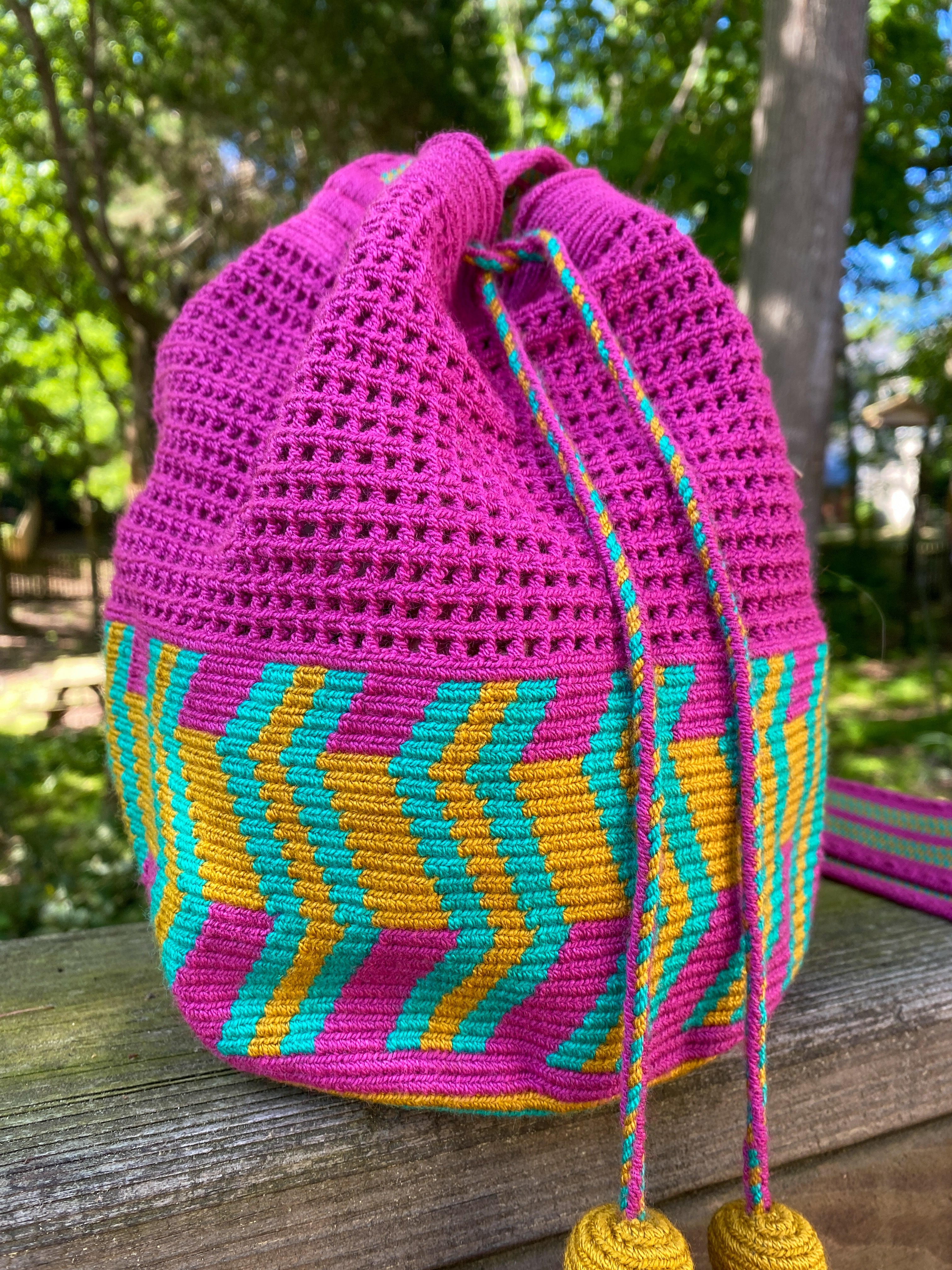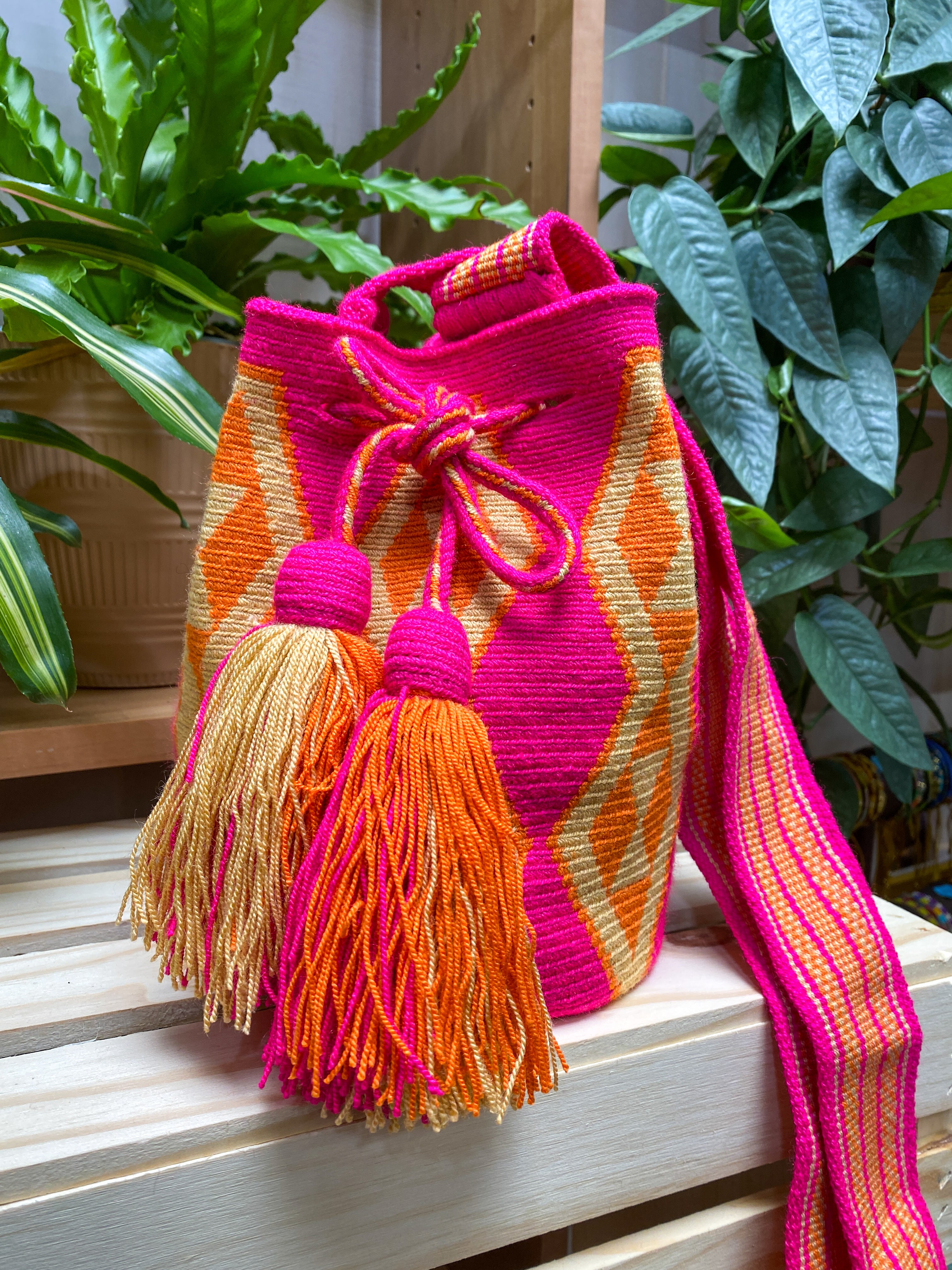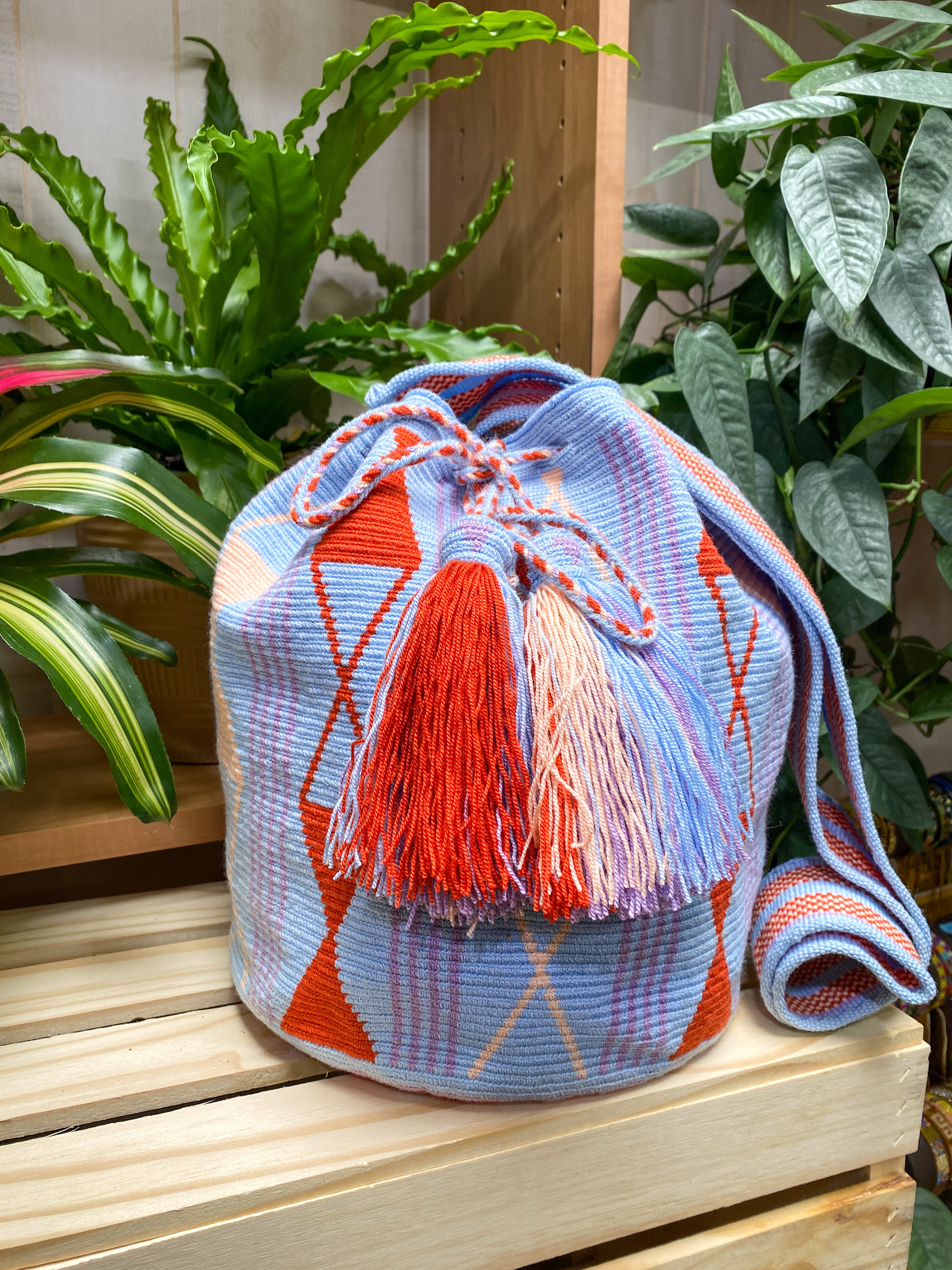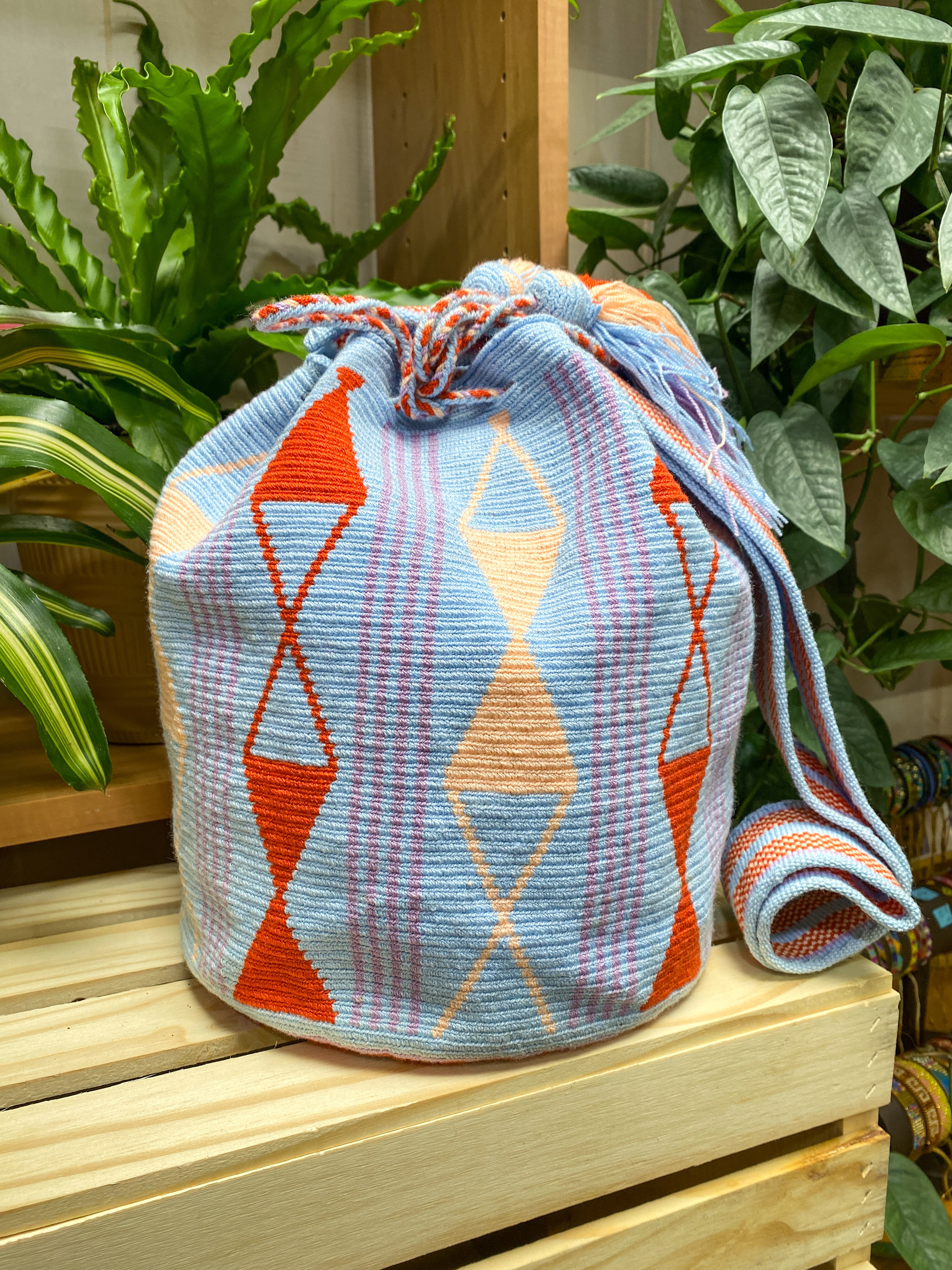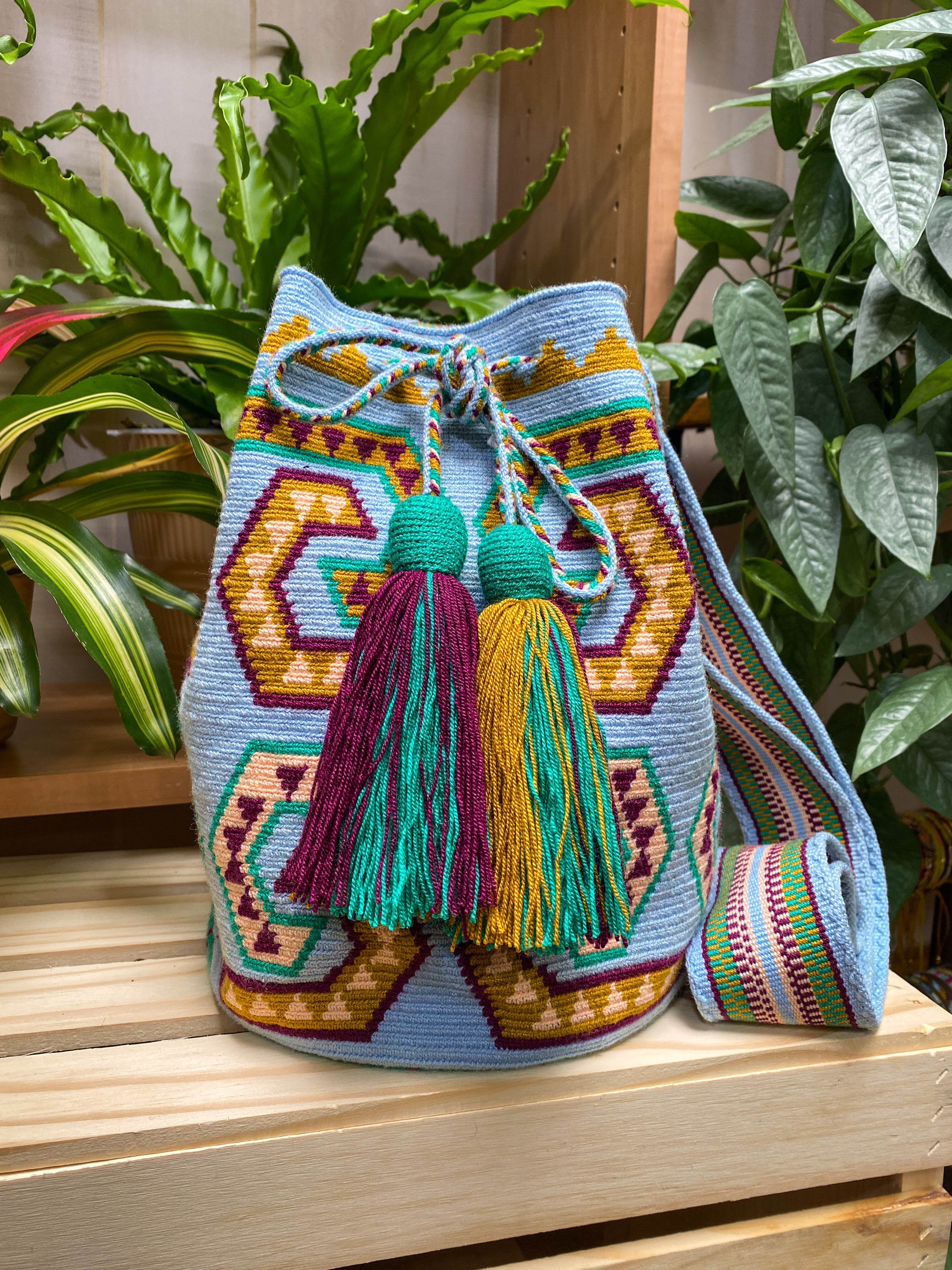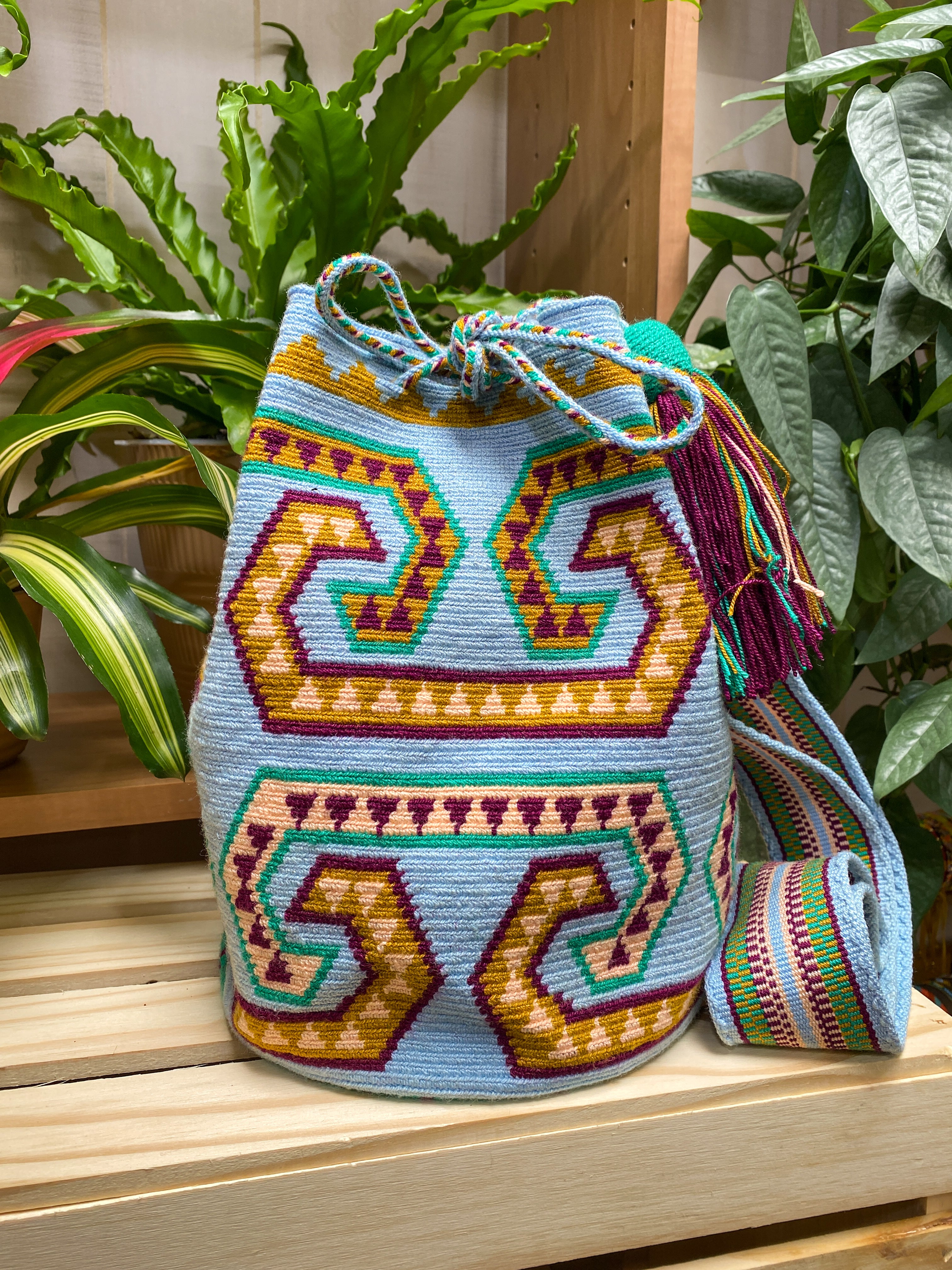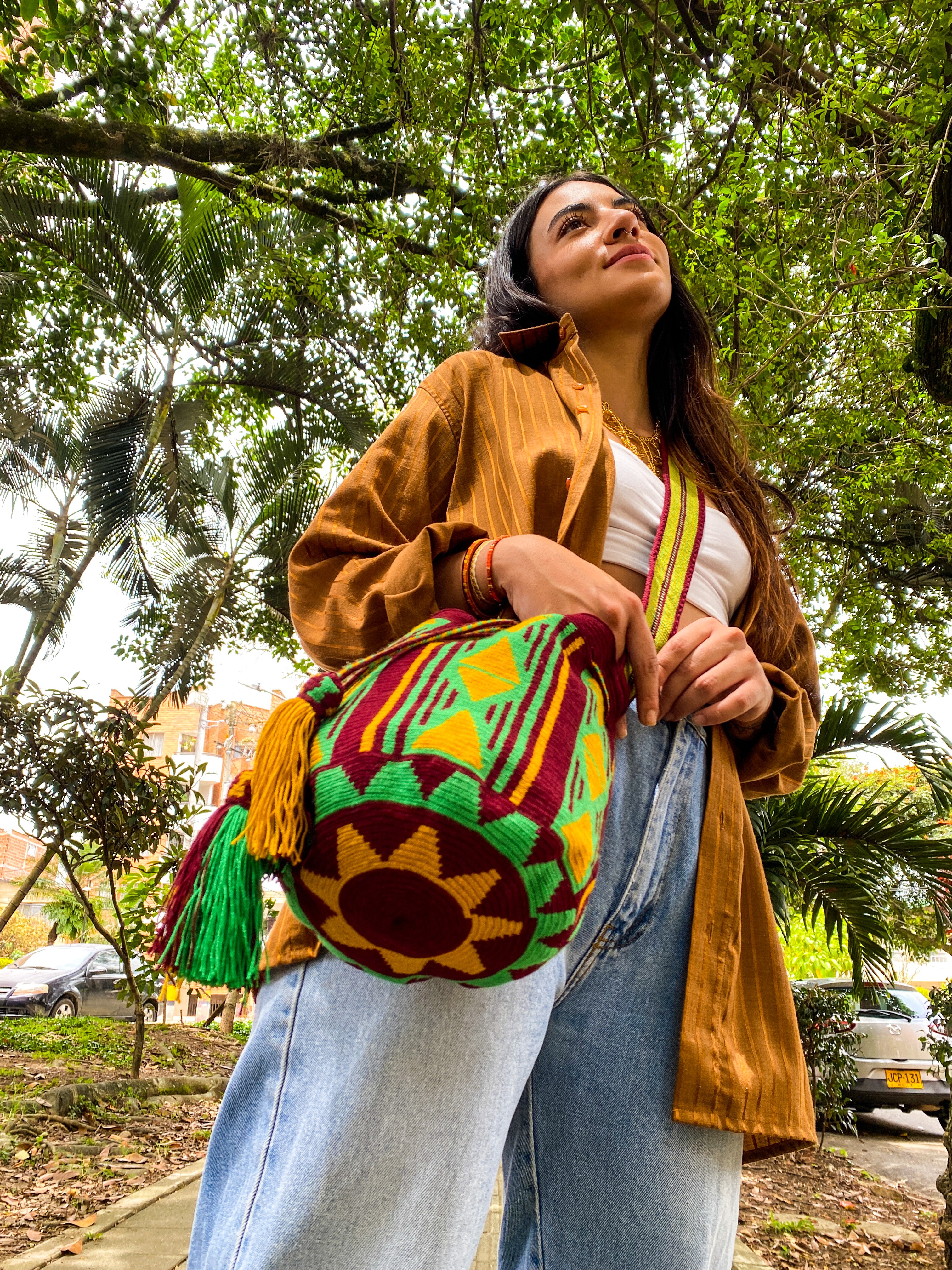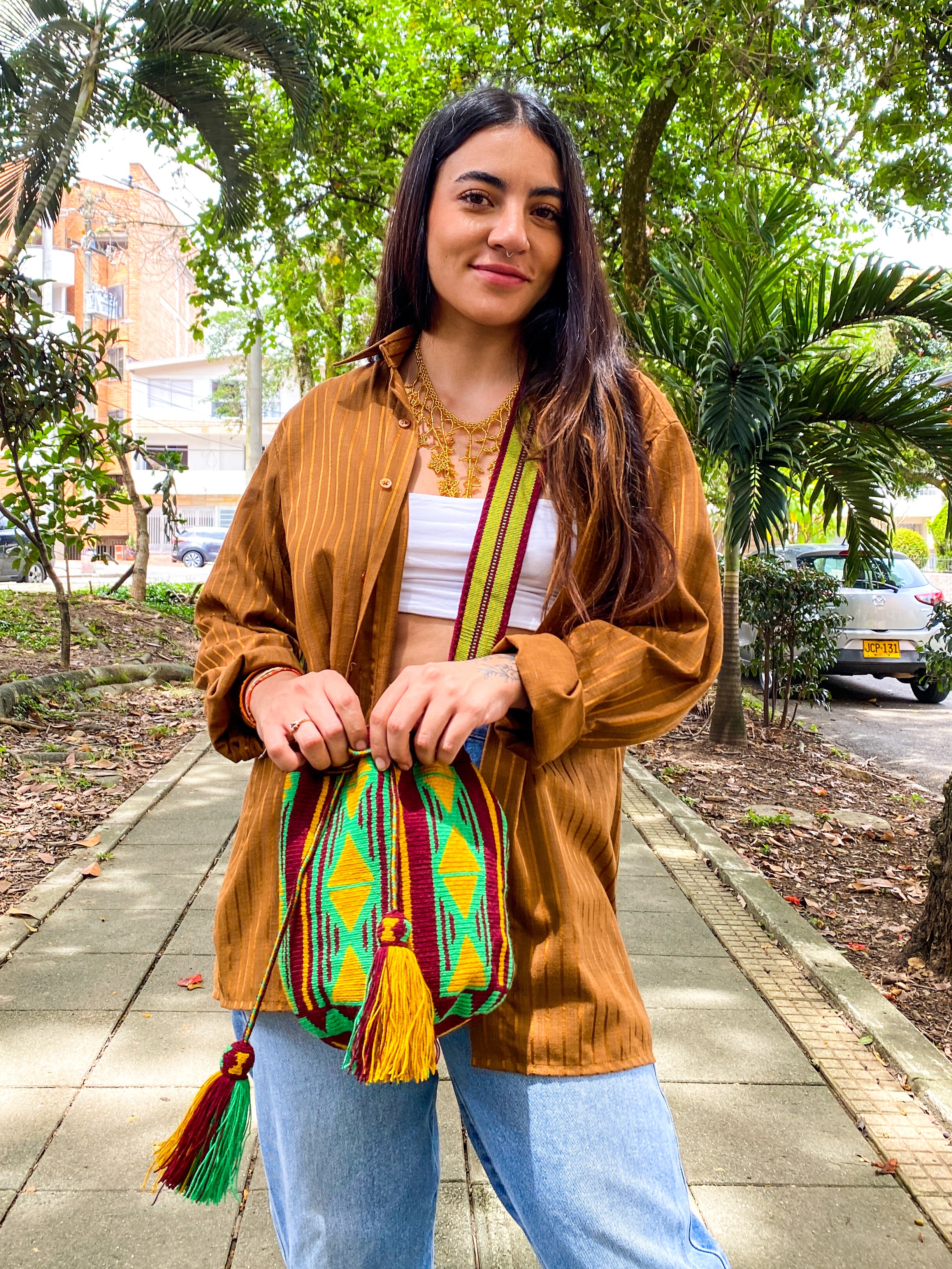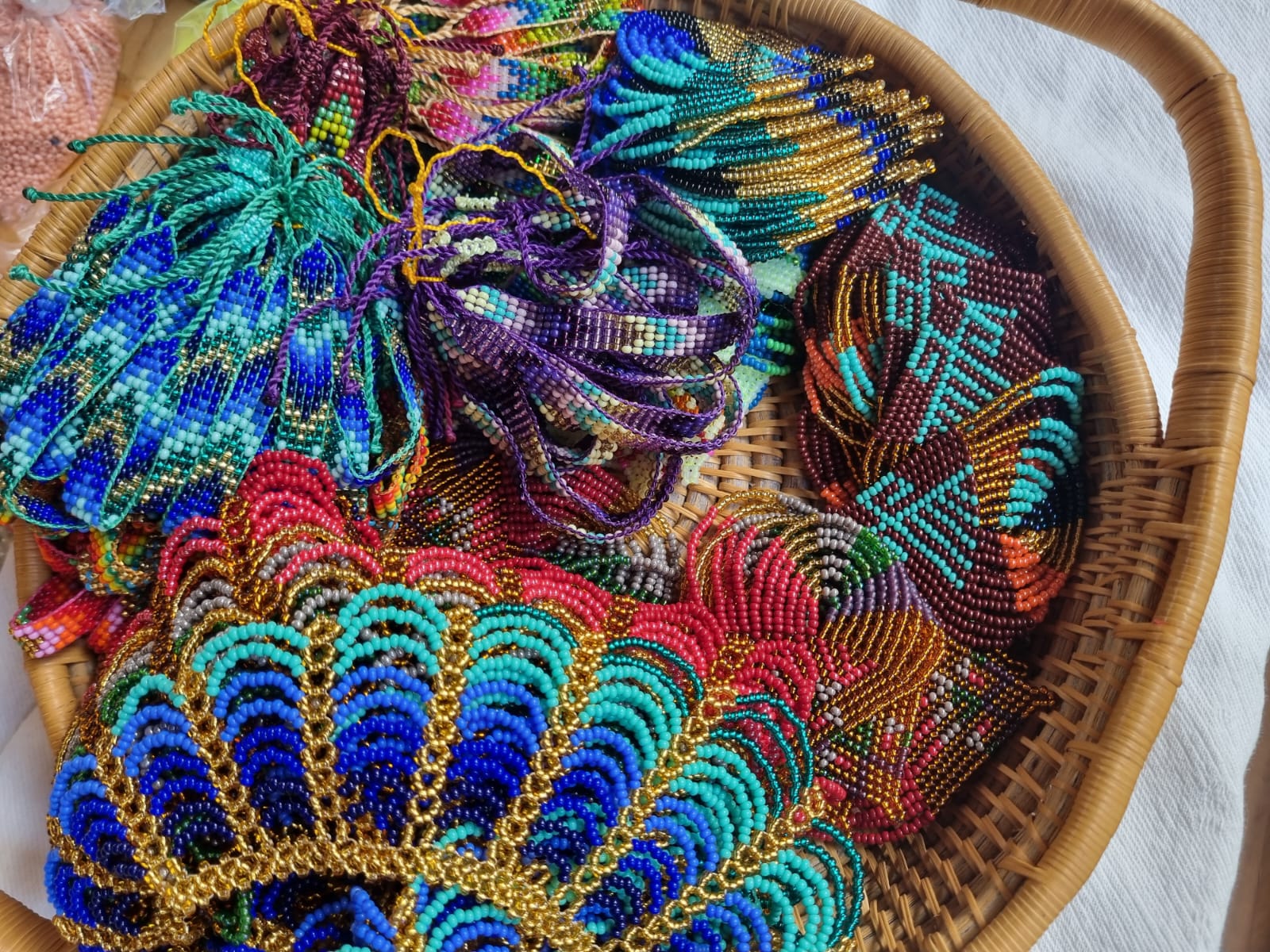Iwouyaa Association of Wayuu Weavers

Ixela, Wayuu from the Apshana clan, is an artisan who with her hands works day by day to preserve the legacy and tradition of her territory. Every piece that she elaborates carries a special process of individual and collective work that makes it unique. Ixela, alongside her two sisters Blanca and Angela, are following the legacy of their late mother, Cecilia Acosta, and many generations of women in their family to continue the legacy of Wayuu culture.
Their mother always worked to maintain the tradition and connection to the land. She used to say that she had learned to weave “the yarn of life” since she was seven years old. Traditionally Wayuu women enter a year of confinement as they begin to menstruate where they learn to become masters of weaving. In this coming-of-age ritual, every Acosta woman learned to perfect weaving hammocks (traditionally called chinchorros), how to use a loom for cloth making, and how to crochet bags (traditionally called mochilas). They also understood the meaning of the kaanás, the designs that depict states of nature or movements. The name Iwouyaa comes from the kaaná that represents the star that marks the arrival of spring.
Beyond weaving, their family leads ethno-tourism projects and 11 schools that serve 1,500 children, teaching them their native language, their ways of thinking, their history, as well as to respect and value their community.
More About the Wayuu
Filters
Filters

